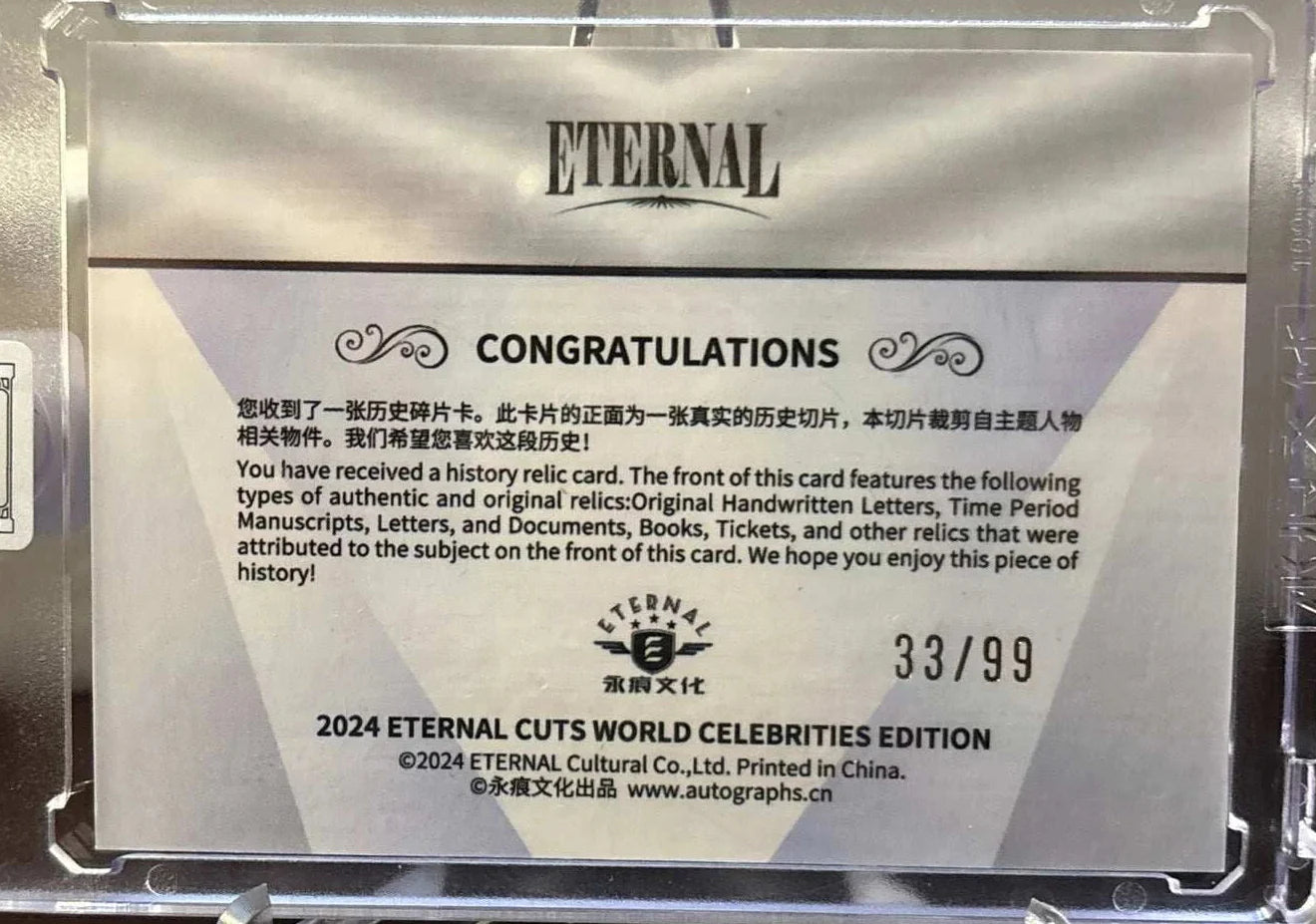Rarity Rack Store
Eternal Cuts (2024) — Wilbur Wright Relic Card #33/99 (Cut Handwritten Fragment)
Eternal Cuts (2024) — Wilbur Wright Relic Card #33/99 (Cut Handwritten Fragment)
Limited-edition Eternal Cuts “Authentic History Relic” card (33/99) containing a mounted cut fragment of period ink handwriting. Factory-mounted in holder; manufacturer certificate printed on back. Good display piece — sold “as-is” unless independently authenticated.
Overall slope & nib behavior — match
Your fragment: strong rightward slant, visible line-width variation (thin hairlines to thicker downstrokes) consistent with a pointed steel-nib/dip pen.
Wilbur’s letters & signed correspondence show the same slant and pressure variation typical of late-19th / early-20th pointed-nib handwriting.
Capital forms (the “L” in “Louis”)
Your capital L: looped upper stroke with a rounded shoulder and clear entrance stroke — a style common in period hands.
Wilbur’s surviving handwritten letters and signatures show capital letters that are often looped and ornate, though signatures can simplify forms; the “L” form in your scrap is compatible with period Wilbur exemplars but not uniquely diagnostic.
Lowercase letter joins and shape (o-u-i-s)
Your “ouis” in “Louis” flows with tight joins and a compact “o” and slightly narrow “u” — this matches many of Wilbur’s written words in auctioned letters (where short letter groups show similar compact linking) but these features are common across many writers of the era. Compatibility: yes, but not distinctive.
Ascender/descender style and final strokes
The long descending stroke at the top right of your fragment is a confident, tapered flourish. Wilbur’s documents sometimes show similar long tapered terminals on g/j/y forms; again, this is supportive but not conclusive.
Material evidence (paper ruling, ink tone)
Your close-up shows faint horizontal ruling and paper texture consistent with stationery used in the Wright era. Auctioned Wilbur fragments and archived Wright Papers use similar stock. This strengthens period plausibility but does not prove authorship.
Differences / red flags
No signature or multi-word cluster unique to Wilbur: Experts rely on consistent idiosyncracies (how someone forms particular letters repeatedly, signature idiosyncrasies). Small scraps rarely capture those.
Cut fragments are common in modern relic cards — and cutting destroys contextual clues (date, recipient, marginalia) that help attribution.
Visually the fragment is period-consistent (pointed-nib cursive, slant, ink/ paper ruling) and shows letter-shapes that could occur in Wilbur Wright’s hand — but it lacks a signature or long, idiosyncratic letter sequences needed for a confident attribution from photos alone.
✅ Optional Grading & Authentication:
Third-party grading and/or authentication services (e.g., PSA/DNA, JSA, Beckett) are available as an add-on. These services can confirm provenance and increase the card’s resale potential and buyer confidence.
📬 Please message to discuss turnaround time, available providers, and pricing prior to purchase.
Share









